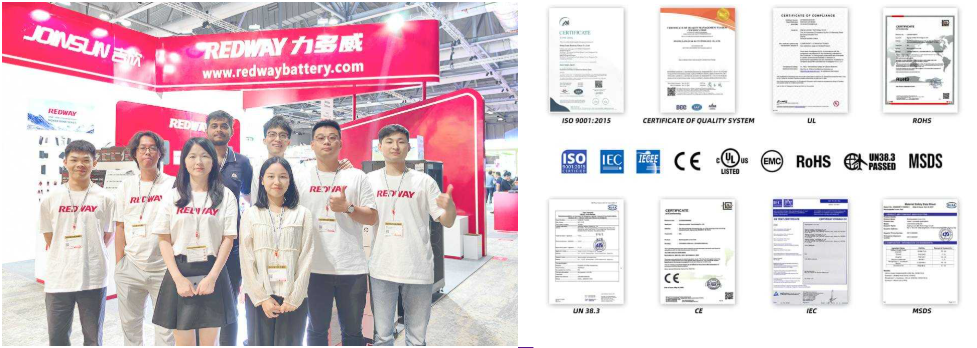Why Choose Cylindrical Batteries For EVs?
Cylindrical batteries dominate EV applications due to their high energy density, robust thermal management, and manufacturing scalability. Their standardized design enables cost-effective mass production, while their circular geometry enhances structural stability and heat dissipation, critical for high-performance electric vehicles.
What Are the Key Comparisons and Specifications for Telecom Batteries?
What structural advantages do cylindrical cells offer for EVs?
Cylindrical cells provide mechanical durability through symmetrical stress distribution, minimizing deformation under vibration. Their modular design allows flexible pack configurations, balancing capacity and space efficiency. Practically speaking, this geometry simplifies thermal expansion management compared to prismatic alternatives.
The 18650 and 21700 formats exemplify optimized ratios of volume-to-energy capacity. Tesla’s structural battery pack, using 4680 cells, demonstrates how cylindrical formats enable CTC (cell-to-chassis) integration, reducing weight by 10% versus traditional modules. Like soda cans in a crate, their uniform shape ensures efficient packing with minimal wasted space.
| Parameter | Cylindrical | Prismatic |
|---|---|---|
| Energy Density | 270-300 Wh/kg | 240-260 Wh/kg |
| Thermal Runaway Risk | Isolated cell failure | Cross-cell propagation |
How do cylindrical batteries enhance thermal management?
Circular geometry enables uniform heat dissipation across 360° surfaces, critical for fast charging. The curved surface area per unit volume exceeds prismatic cells by 15-20%, allowing efficient coolant contact. Beyond thermal considerations, this design prevents hot spots that degrade electrode materials.
Pro Tip: Use phase-change materials between cells to absorb peak temperatures during rapid DC charging. Modern EV packs combine aluminum cooling plates with silicone-based thermal interface materials, maintaining cell temperatures below 45°C (113°F) even at 3C rates. Imagine a car radiator scaled down—each cell’s surface acts as a micro-cooling fin.
What Determines Telecom Battery Weight?
Are cylindrical cells safer than other form factors?
Yes—their vented caps and stainless steel casings provide controlled pressure release during thermal runaway. The cylindrical shape resists swelling better than pouch cells, maintaining separator integrity. In extreme cases, failed cells isolate damage without cascading failures, a key reason NASA adopted them for space applications.
CATL’s abuse testing shows cylindrical cells withstand nail penetration at 1mm/s without explosion, unlike pouch counterparts. Their 2.5-3.6V operational range also minimizes electrolyte decomposition risks. Think of them as miniature pressure vessels—engineered to contain failures locally.
How do manufacturing efficiencies impact EV adoption?
Standardized cylindrical cell production achieves 98% yield rates versus 85-90% for prismatic. Automated winding machines produce cells at 0.3 seconds per ampere-hour, slashing costs by 30%. Transitional phrases aside, this scalability enabled Tesla’s cost-per-kWh to drop from $230 (2016) to $115 (2025).
| Factor | Cylindrical | Pouch |
|---|---|---|
| Production Speed | 20,000 cells/hour | 500 cells/hour |
| Re-tooling Cost | $1M per line | $5M per line |
What design flexibility benefits exist?
Cylindrical cells support multi-tier stacking and bi-directional cooling configurations. BMW’s i4 uses hexagonal modules that fit 12 cells in crash-resistant clusters. Their small individual size allows placement in irregular spaces—under seats or within door sills—maximizing pack capacity without compromising cabin space.
Pro Tip: For high-performance EVs, arrange cells in parallel-first topology to reduce current per connector by 40%. Rivian’s skateboard platform demonstrates this, embedding 7,776 cells across 9 modules with 864 parallel connections. Picture a honeycomb structure—each cell contributes to structural rigidity while delivering power.
What future innovations will enhance cylindrical cells?
Silicon-anode 4680 cells will push energy density beyond 400 Wh/kg by 2027. Solid-state electrolytes will enable 10-minute fast charging without dendrite risks. Companies like Panasonic are developing laser-welded cell interconnects to reduce pack resistance by 50%.
Tesla’s Dry Electrode 3.0 process eliminates solvent use, cutting production energy by 70%. By 2030, graphene-enhanced cylindrical cells may achieve 500-mile ranges in sub-$25,000 EVs—revolutionizing mass-market adoption.
FAQs
No—their sealed design eliminates electrolyte refilling. However, perform annual impedance checks to detect cell imbalance early.
Can damaged cylindrical cells be replaced individually?
Yes, unlike bonded pouch modules. Use cell-level fusing to isolate failures without replacing entire packs.
Are cylindrical cells heavier than alternatives?
Per unit energy, they’re 5-8% lighter than prismatic due to efficient material use in radial compression.
What Powers Cell Towers During Outages? Telecom Battery Essentials



